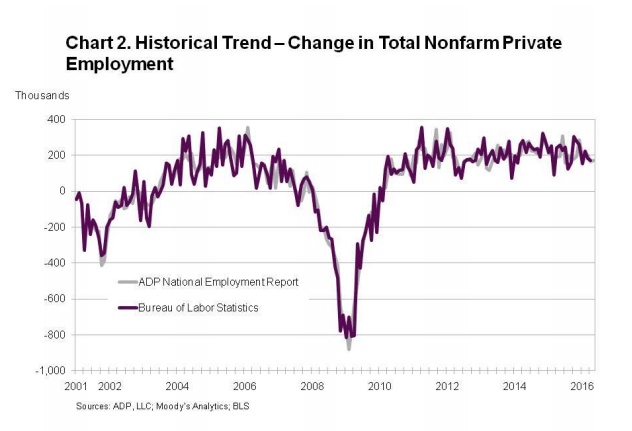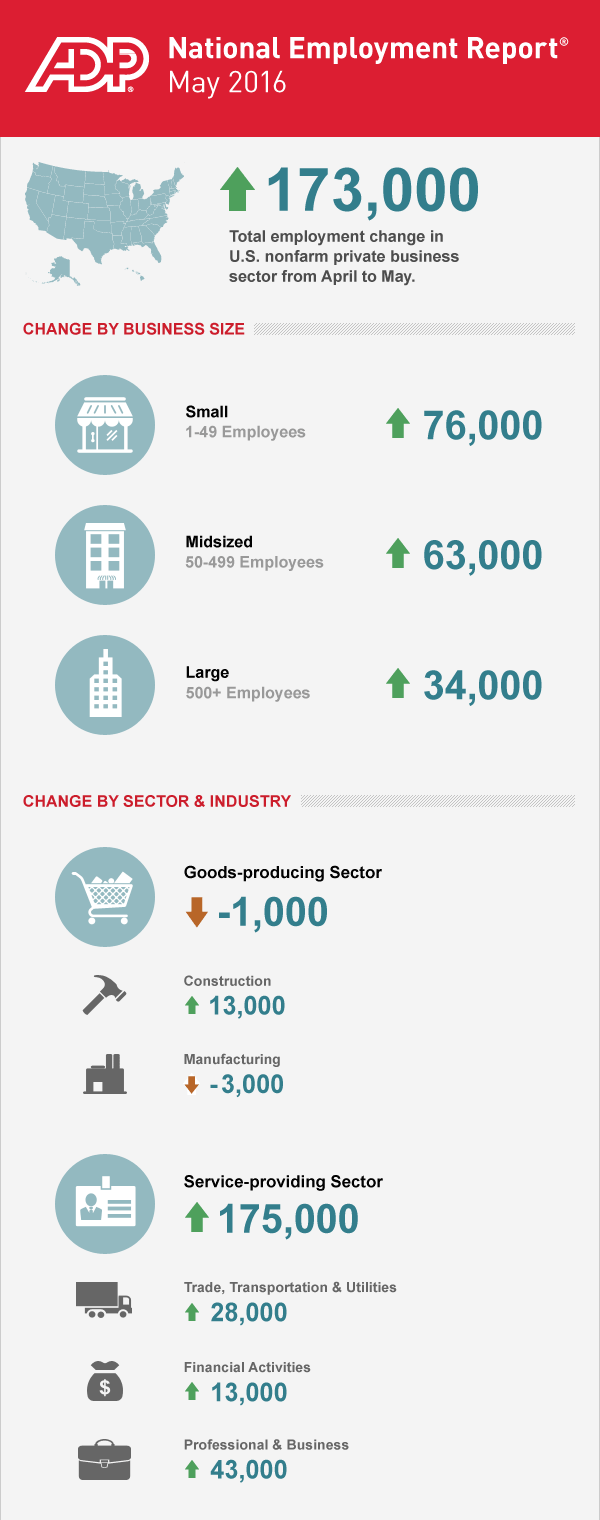Building wealth through homeownership is a steadfast pillar of the middle class. However, most people need savings in the bank first.
The number of jobs lost or gained every month is telling of how many people will have the opportunity to take that step — whether it’s now or someday in the future.
Global provider of digital Human Capital Management platforms ADP issued its latest National Employment Report today in collaboration with Moody’s Analytics.
In May 2016, employment in the nonfarm private sector increased by 173,000 jobs. This is up from 156,000 jobs added in April, but lower than the growth seen at end of 2015 through the beginning of this year.
In May 2016, employment increased by 173,000 jobs.“Job creation appears to have slowed as we move further into 2016,” said Ahu Yildirmaz, VP and head of the ADP Research Institute in the report. “Challenging global conditions affecting hiring at large companies and a tightening labor market for skilled workers are among the factors that may be contributing to the slowdown.”

In April’s report, Mark Zandi, chief economist of Moody’s Analytics, posited that small businesses are still responsible for a substantial portion of growth because they are less vulnerable in the wake of volatile global conditions. That trend appears to have continued in May.
Industry breakdown Construction: 13,000 (down from 14,000 in April) Financial activities: 13,000 (up from 4,000 in April) Professional/business services: 43,000 (up from 27,000 in April)Manufacturing lost 3,000 jobs, though this is an improvement from the 13,000 lost in this industry the month prior.

The ADP Research Institute in collaboration with Moody’s Analytics takes actual, anonymous payroll data from its client companies to measure the change in total nonfarm private employment every month. The data processing mirrors the statistical methodologies used by the Bureau of Labor Statistics.
The National Employment Report measures nearly 24 million U.S. workers and offers analysis around employment trends.
This month, Zandi added: “Job growth has moderated this spring as energy companies and manufacturers shed jobs. Retailers are also more circumspect in their hiring. Despite the recent slowdown, job growth remains strong enough to reduce underemployment.”
Like me on Facebook! | Follow me on Twitter!
Source: click here













